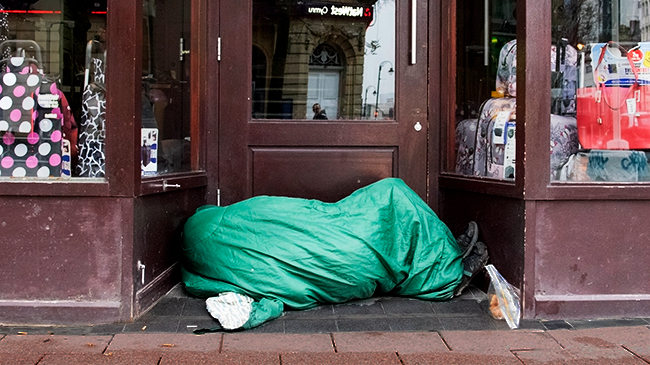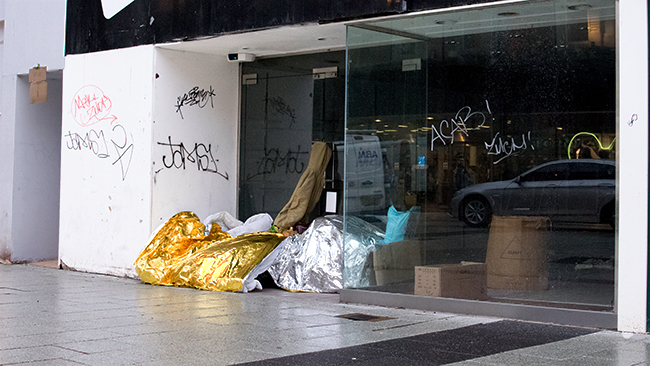After two recent deaths in Cardiff parks, rough sleeping in the region is worsening, new data shows.
More people are sleeping rough in Cardiff every year, despite charity and government efforts to tackle the issue. A charity report published two weeks ago shows that the number of rough sleepers has increased by 24 per cent.

“Without concerted efforts by a range of stakeholders, the situation is likely to deteriorate,” said the report by The Wallich, a Welsh charity.
Rough sleeping, which is a type of homelessness where people have absolutely nowhere to stay, is a growing issue across all of Wales.
Over the last two years, the country has seen more than a 40 per cent rise in estimated numbers of people living on the streets, according to the Welsh government.
From November 2016 to October 2017, The Wallich supported 2,611 people who were “living street based lifestyles” across Cardiff, Newport, Swansea and Bridgend.
Recent data released by the charity show that more than half of rough sleepers live in Cardiff. They are more likely to be male, with an average age of 40-42.

The rise in homelessness is also very much a national phenomenon.
Jennifer Hoolachan, a sociologist at Cardiff University, identified three contributing factors to the surge in homelessness in the UK: a decrease in social housing, cuts to welfare benefits, and lack of regulation in the rising private rented sector.
“At the moment [in Wales] when a tenancy comes to an end, the landlord can decide they don’t want you there anymore and they don’t have to give any reason for it,” said Hoolachan.
The Welsh Government, however, introduced the Housing Act in 2014 in an attempt to prevent homelessness.
But the Wales Audit Office (WAO) recently questioned the law’s efficacy: “Not all authorities have effectively organised themselves to fully implement these new duties.
“Authorities […] are generally effective at providing advice, but not all homeless people and potentially homeless people get the help they need,” the WAO said.
Two tragic examples of this are the deaths of an 18-year-old man last Tuesday, near Cardiff Bay, and of a 32-year-old woman, in November.
.embed-container { position: relative; padding-bottom: 56.25%; height: 0; overflow: hidden; max-width: 100%; } .embed-container iframe, .embed-container object, .embed-container embed { position: absolute; top: 0; left: 0; width: 100%; height: 100%; }
Events such as these have spurred people in Cardiff to demonstrate and to donate money to charities.
Recently, the Reaching out to Rough Sleepers campaign, organised by The Wallich and the South Wales Echo, raised £82,000 to pay for specialised vehicles to help people on the streets.

Charity The Wallich asks people to report rough sleepers with the StreetLink service. The service allows for local authorities to follow up or help that person.
You can access the service on the mobile app, the website, or via telephone on 0300 500 0914.
(function(d){var js, id=”pikto-embed-js”, ref=d.getElementsByTagName(“script”)[0];if (d.getElementById(id)) { return;}js=d.createElement(“script”); js.id=id; js.async=true;js.src=”https://create.piktochart.com/assets/embedding/embed.js”;ref.parentNode.insertBefore(js, ref);}(document));

